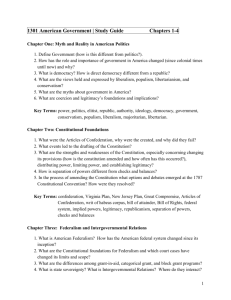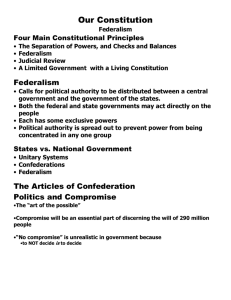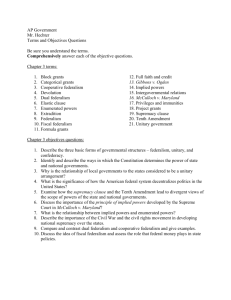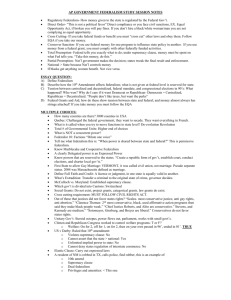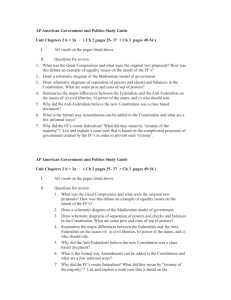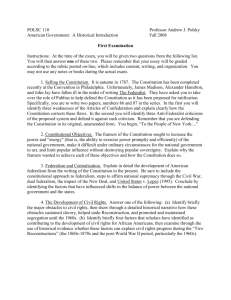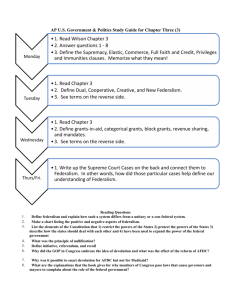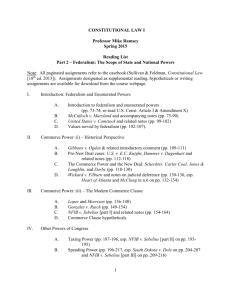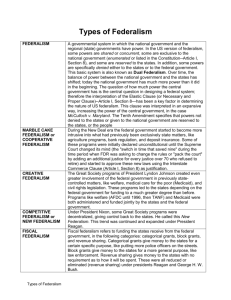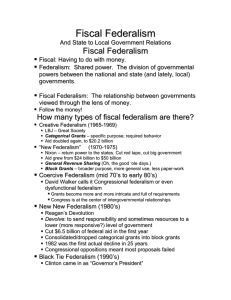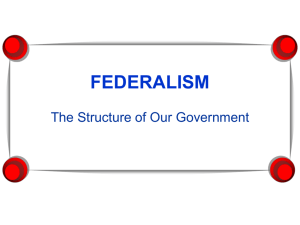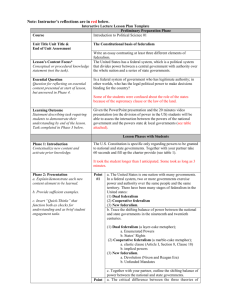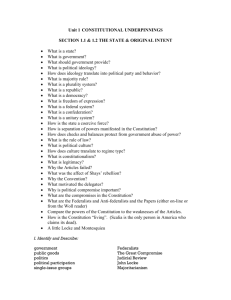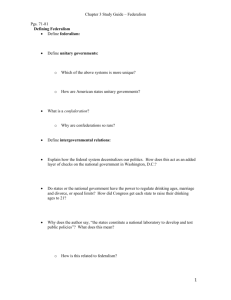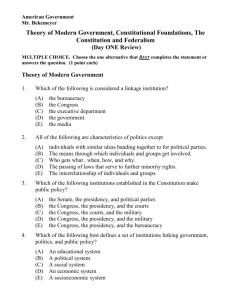Unit I Study Guide - OCPS TeacherPress
advertisement
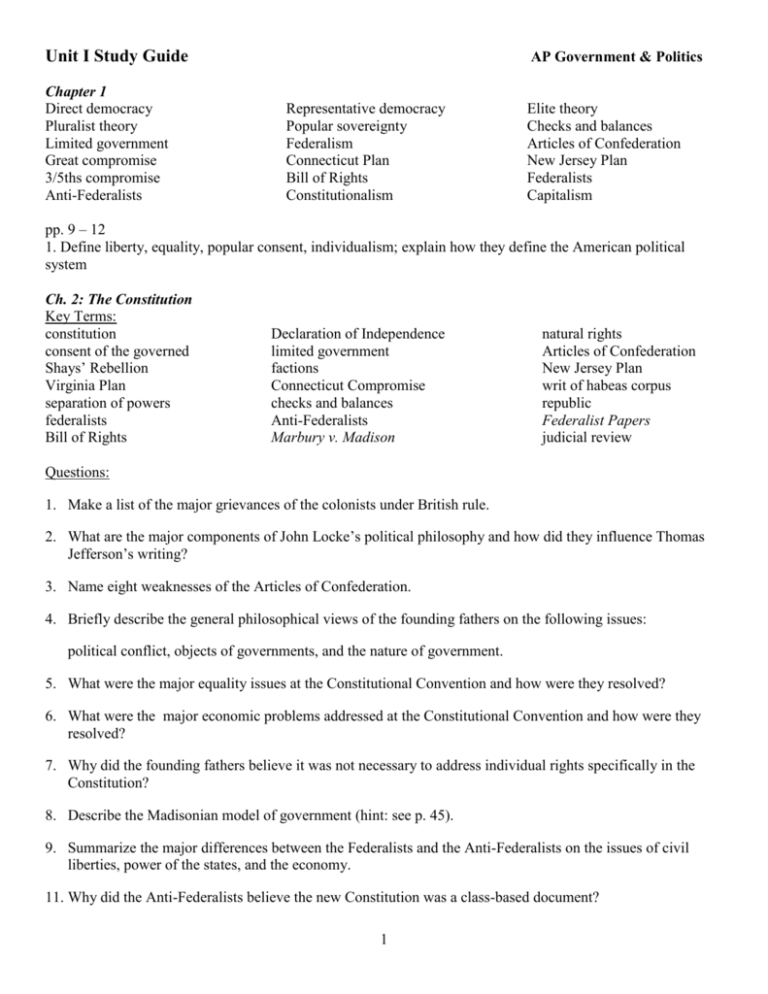
Unit I Study Guide Chapter 1 Direct democracy Pluralist theory Limited government Great compromise 3/5ths compromise Anti-Federalists AP Government & Politics Representative democracy Popular sovereignty Federalism Connecticut Plan Bill of Rights Constitutionalism Elite theory Checks and balances Articles of Confederation New Jersey Plan Federalists Capitalism pp. 9 – 12 1. Define liberty, equality, popular consent, individualism; explain how they define the American political system Ch. 2: The Constitution Key Terms: constitution consent of the governed Shays’ Rebellion Virginia Plan separation of powers federalists Bill of Rights Declaration of Independence limited government factions Connecticut Compromise checks and balances Anti-Federalists Marbury v. Madison natural rights Articles of Confederation New Jersey Plan writ of habeas corpus republic Federalist Papers judicial review Questions: 1. Make a list of the major grievances of the colonists under British rule. 2. What are the major components of John Locke’s political philosophy and how did they influence Thomas Jefferson’s writing? 3. Name eight weaknesses of the Articles of Confederation. 4. Briefly describe the general philosophical views of the founding fathers on the following issues: political conflict, objects of governments, and the nature of government. 5. What were the major equality issues at the Constitutional Convention and how were they resolved? 6. What were the major economic problems addressed at the Constitutional Convention and how were they resolved? 7. Why did the founding fathers believe it was not necessary to address individual rights specifically in the Constitution? 8. Describe the Madisonian model of government (hint: see p. 45). 9. Summarize the major differences between the Federalists and the Anti-Federalists on the issues of civil liberties, power of the states, and the economy. 11. Why did the Anti-Federalists believe the new Constitution was a class-based document? 1 Unit I Study Guide AP Government & Politics 12. Describe the different ways in which a formal constitutional amendment might be adopted. 14. List and explain the five Constitutional amendments that expanded the right to vote. 15. In what ways does the Constitution expand and diminish the scope of government. Ch. 3: Federalism Key Terms: unitary / confederate / federal systems McCulloch v. Maryland Necessary and Proper Clause reserved powers Full Faith and Credit Clause dual federalism categorical grants block grants new federalism enumerated powers Elastic Clause concurrent powers Privileges and Immunities Clause cooperative federalism project grants revenue sharing Supremacy Clause implied powers Tenth Amendment Gibbons v. Ogden extradition fiscal federalism formula grants Questions: 1. Describe the three general obligations that each state has to every other state under the Constitution. 2. How is dual federalism analogous to a layer cake and cooperative federalism analogous to a marble cake? 3. For what reasons might a state or locality not want to receive federal aid? 4. What are the advantages and disadvantages of federalism? 5. How did industrialization increase the role of the national government? 6. Why don’t the states handle more issues? 7. Describe the relationship between local and state governments. 8. How has the national level of government benefited from the fact that the states have been allowed to do most of the fundamental governing of the American people? 9. What is meant by the concept of “devolution” in terms of federalism? 2
